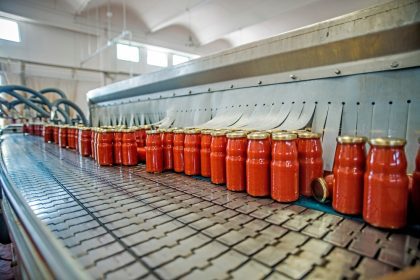As we move through 2025, the devastating food safety crisis of 2024 continues to cast a long shadow over American kitchens and grocery stores. Last year’s alarming surge in foodborne illnesses doubled hospitalization rates and forever changed how millions of families approach food safety in their daily lives.
The year 2024 will be remembered as a turning point in food safety awareness, when contaminated products triggered a public health emergency that claimed lives and sent thousands to hospitals across the nation. Health departments nationwide worked around the clock to contain outbreaks that seemed to emerge weekly, affecting everything from holiday meals to everyday staples.
Looking back now, the scale of that crisis becomes even more apparent. What began as isolated incidents quickly escalated into a systemic breakdown that exposed vulnerabilities throughout America’s food supply chain. The lessons learned from that difficult year continue to influence food safety protocols and consumer behavior today.
The impact extended far beyond individual cases of illness, representing a fundamental shift in how Americans think about the safety of foods they had trusted for generations. Families who had never questioned the safety of common grocery items suddenly found themselves scrutinizing every purchase and preparation method.
The 10 foods that defined 2024’s health emergency
Consumer safety experts analyzing 2024’s data identified ten categories of foods responsible for the majority of illness outbreaks that year. These products became household names for all the wrong reasons, forcing millions of Americans to reconsider their shopping and eating habits.
- Deli meats emerged as the most dangerous category, with their processing methods and cold storage requirements creating perfect conditions for bacterial growth. The ready-to-eat nature of these products meant families often skipped heating steps that could have prevented illness.
- Cucumbers shocked consumers by appearing frequently in outbreak reports throughout 2024. Contamination typically occurred through soil contact or contaminated irrigation water that penetrated the vegetable’s skin during growing seasons.
- Raw milk products continued their troubling pattern of causing illness despite years of warnings from health officials about the risks of unpasteurized dairy consumption.
- Soft cheeses made from unpasteurized milk carried similar dangers, with bacterial contamination remaining viable throughout aging processes that consumers assumed would eliminate risks.
- Eggs maintained their position as a persistent source of illness, particularly when shells were cracked or when products were consumed raw or undercooked in popular recipes.
- Onions surprised many by appearing on high-risk lists, with contamination typically occurring during growing or processing phases that few consumers had previously considered.
- Leafy greens including lettuce and spinach faced contamination from multiple sources throughout the supply chain, from soil and water to handling during processing and packaging.
- Carrots demonstrated that even root vegetables weren’t immune to bacterial contamination, particularly when grown in soil affected by contaminated water sources.
- Fresh basil and other herbs harbored dangerous bacteria that survived typical washing processes, catching health-conscious consumers off guard.
- Ready-to-eat meats beyond traditional deli items showed increased contamination rates due to processing and packaging vulnerabilities that became apparent only after major outbreaks occurred.
The outbreaks that changed everything in 2024
The severity of 2024’s food safety breakdown became clear through specific incidents that affected hundreds of people and dominated news cycles for months. One of the most devastating cases involved a major deli meat producer forced to recall 7 million pounds of ready-to-eat products after bacterial contamination led to 60 hospitalizations and claimed 10 lives across 19 states.
That outbreak sent shockwaves through the industry and prompted immediate changes in processing protocols that are still being implemented today. Families who had relied on deli meats for quick lunches and convenient dinners suddenly found themselves heating every slice before consumption.
Cucumber contamination reached epidemic proportions when products from a major grower sickened 551 people in a single outbreak that spread across multiple states. The incident highlighted critical gaps in produce safety protocols and demonstrated how quickly contaminated vegetables could spread illness through distribution networks.
The scale of that cucumber outbreak forced grocery chains to implement new testing procedures that remain in place today. Consumers learned to view even the most innocuous vegetables with new caution, fundamentally changing produce shopping habits.
The dairy industry faced its own reckoning when unpasteurized products from a prominent raw milk producer caused illness in at least 165 people. This outbreak reignited national debates about raw dairy safety that continue to influence policy discussions in 2025.
Egg contamination delivered another devastating blow when a large-scale poultry operation recalled millions of eggs after 93 people fell ill. The incident exposed ongoing challenges in preventing bacterial contamination in egg production facilities and led to industry-wide protocol changes.
Even vegetables traditionally considered safe proved dangerous when slivered onions caused 104 E. coli infections in a widespread outbreak that affected restaurant chains nationwide. The incident demonstrated that contamination risks extended far beyond traditionally problematic foods.
Fresh produce safety took another hit when organic carrots from a major grower were linked to an E. coli outbreak affecting 48 individuals. The contamination of organic products particularly concerned health-conscious consumers who had chosen these items specifically for their perceived safety benefits.
Understanding how 2024’s contamination crisis unfolded
The foods that appeared on 2024’s high-risk list shared common characteristics that made them particularly susceptible to bacterial contamination. Processing methods played crucial roles, with products undergoing minimal heat treatment or consumed raw carrying the highest risks.
Ready-to-eat items faced unique challenges because they bypassed cooking steps that would normally eliminate harmful bacteria. These products had to maintain safety from processing through consumption, creating multiple opportunities for contamination that weren’t always addressed adequately.
Fresh produce faced contamination risks from soil, water, and handling throughout supply chains that proved more vulnerable than previously understood. Irrigation water contaminated with animal waste or human sewage introduced dangerous bacteria that survived on or in vegetables through harvest and distribution.
Dairy products made from unpasteurized milk lacked critical heat treatment that eliminates most harmful bacteria. While proponents continued arguing for nutritional benefits of raw dairy, the health risks became undeniable after 2024’s major outbreaks.
Processing environments in large-scale food production facilities became sources of contamination when cleaning and sanitation protocols failed. Once established, bacterial contamination persisted in these environments and affected multiple batches of products over extended periods.
How families adapted after 2024’s food safety wake-up call
The rising tide of foodborne illnesses in 2024 forced immediate behavioral changes from consumers who could no longer rely solely on food safety regulations to protect their families. Many of these precautionary measures have become permanent parts of kitchen routines.
Heat treatment became the standard practice for foods previously consumed cold. Deli meats are now routinely heated to steaming temperatures before consumption, even when labeled as ready-to-eat. This simple step has become second nature for families who lived through 2024’s outbreaks.
Thorough washing of fresh produce under running water became more rigorous, though consumers learned that washing couldn’t eliminate bacteria that had penetrated into produce or been absorbed through root systems. Many families invested in vegetable brushes and dedicated produce washing stations.
Risk avoidance became common among vulnerable populations including pregnant women, young children, elderly individuals, and those with compromised immune systems. Raw milk, unpasteurized cheeses, and raw eggs disappeared from many households after 2024’s devastating outbreaks.
Proper food storage and handling in home kitchens received renewed attention as families realized that bacteria present in low levels on purchased foods could multiply to dangerous levels without proper precautions. Refrigeration temperatures and cross-contamination prevention became priorities.
Consumer vigilance regarding food recalls intensified dramatically after 2024’s experiences. Families now routinely check recall notices and immediately remove affected products from their kitchens, having learned that contaminated products continued reaching store shelves despite safety protocols.
The lasting impact of 2024’s food safety crisis
The dramatic increase in foodborne illnesses during 2024 exposed deeper problems within America’s food safety infrastructure that continue to influence policy and industry practices today. Aging processing facilities, inadequate inspection resources, and complex global supply chains created vulnerabilities that bacteria exploited with devastating effectiveness.
Climate change factors may have contributed to increased contamination risks by creating conditions favoring bacterial growth and survival. Rising temperatures and changing precipitation patterns affected how pathogens survived in agricultural environments and processing facilities.
The consolidation of food production into fewer, larger facilities meant that when contamination occurred, it affected massive quantities of products distributed across multiple states. This centralization amplified the impact of individual food safety failures in ways that shocked regulators and industry leaders.
Consumer behavior changes, including increased demand for fresh, minimally processed foods, may have inadvertently increased exposure to contamination risks. While these products offered nutritional benefits, they also bypassed processing steps that would have eliminated harmful bacteria.
The economic impact of 2024’s foodborne illness outbreaks extended beyond immediate healthcare costs to include lost productivity, legal expenses, and permanent damage to brand reputation for affected companies. These broader costs ultimately affected food prices and industry stability in ways still being felt today.
As we continue through 2025, the lessons learned from 2024’s food safety crisis remain fresh in the minds of consumers and industry professionals alike. The ten foods identified as highest risk that year continue to receive extra scrutiny, while vigilance regarding all food safety practices has become more important than ever. The crisis changed not just how we shop and cook, but how we think about the fundamental safety of our food supply.
















